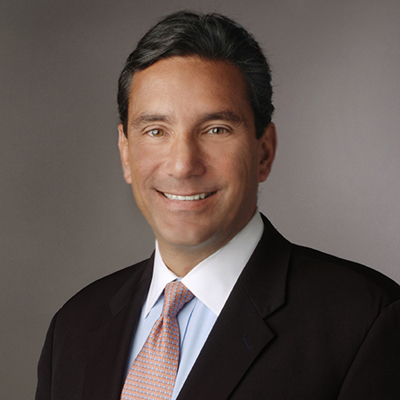Dustin Giannangelo is looking for institutional clients to boost the growth of his 10-year-old Phoenix-based firm. But he’s not sure he’s going about it in the right way.
Until recently, Giannangelo and his partner Anthony Eaton have targeted entrepreneurs and high net worth clients with investable assets of $5 million and above. The firm, Fusion Wealth Management, now manages about $50 million.
Giannangelo’s first exposure to the possibilities happened two years ago. A client, the CFO of a large hospital, asked if Giannangelo could help develop an investor policy statement. That got the partners thinking that institutional clients could bring new growth to the firm. Of course, they realized it’s a highly competitive market with firms exclusively focused on that space, but they reasoned they could tap LPL, their broker/dealer, and its institutional team for help.
Their strategy required taking one of two routes, Giannangelo figured: either go after all the assets of a smaller client or manage a slice of a larger one. They are looking at institutions with less than $100 million for now, and have approached people in their network for leads. That’s led to a slice of a few college endowments, but “you only have so many relationships by happenstance. Now we have to be more targeted,” he says.
What is the best way to accomplish that? Our panel of experts has some tips.
David Girmann, Senior Consultant, Strategy & Resources
 There are a few questions they have to tackle: What makes them unique? How are they going to create some buzz about themselves? They also need to research the pricing models, because it will be considerably less than what they probably get with their average client today. And what about internal support? Setting that up will take time and money. Most important is establishing a track record. They have to shoot for institutions more in the million-dollar range for three to five years, until they’ve built up a reputation.
There are a few questions they have to tackle: What makes them unique? How are they going to create some buzz about themselves? They also need to research the pricing models, because it will be considerably less than what they probably get with their average client today. And what about internal support? Setting that up will take time and money. Most important is establishing a track record. They have to shoot for institutions more in the million-dollar range for three to five years, until they’ve built up a reputation.
But this move could muddy the waters. They need to assess their existing business and see what they can do to increase assets there. Who are their best clients and how can they replicate that? Then they should look at whether they have the right resources in place. Maybe they need more asset managers, say, or new business generators. They have to find out if there’s someplace they’re stuck in their current line of business.
John Nersesian, Managing Director, Wealth Management Services, Nuveen Investments
 They have to become educated about the issues unique to serving institutions. It’s other people’s money and that’s very different from working directly with a husband and wife making financial decisions about their own portfolio. I suggest they take classes on serving foundations and endowments held by such organizations like the Investment Managers Consultants Association (IMCA). At the same time, there’s the option of bringing on a new partner who knows the market. Or their broker/dealer might know about partnering opportunities within the firm.
They have to become educated about the issues unique to serving institutions. It’s other people’s money and that’s very different from working directly with a husband and wife making financial decisions about their own portfolio. I suggest they take classes on serving foundations and endowments held by such organizations like the Investment Managers Consultants Association (IMCA). At the same time, there’s the option of bringing on a new partner who knows the market. Or their broker/dealer might know about partnering opportunities within the firm.
Also, they’ll better penetrate the market by offering educational services to the organizations they want to serve—programs held either in person or via a website on such issues as how to construct an investment policy or understand fiduciary risk.
Ultimately, there’s more promise in the $5 million-to-$25 million market. Those institutions aren’t big enough for the big boys, but they are large enough for them. If they want $100 million and below, they’ve got a lot of wood to chop.
David Canter, Executive Vice President, Practice Management & Consulting, Fidelity Clearing & Custody Solutions
 If they want to serve institutions not as a sideline, but as a serious market, they should be clear about whether they have the right set of capabilities. Next, they need the necessary organizational structure—not just investment personnel, but other services required to respond to the needs of institutions. And there’s infrastructure, including things like compliance software and the right level of insurance and bonding.
If they want to serve institutions not as a sideline, but as a serious market, they should be clear about whether they have the right set of capabilities. Next, they need the necessary organizational structure—not just investment personnel, but other services required to respond to the needs of institutions. And there’s infrastructure, including things like compliance software and the right level of insurance and bonding.
This can be a great growth strategy, but not unless you commit to it. Experience really matters.

